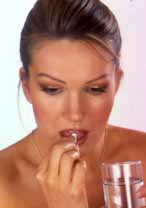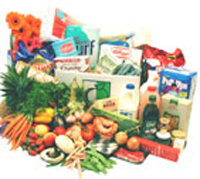Iron Deficiency Anaemia

There are several types of anaemia, however only diet related anaemia will be discussed, as there are so many different reasons for anaemia with various causes behind them. The most common type of anaemia is due to poor diet, and for some women heavy periods exacerbate this.
What is anaemia?
Anaemia is a condition affecting the amount of red blood cells (haemoglobin) in the body. Red blood cells are vital for maintaining healthy oxygen levels in the body. Oxygen is required for normal functioning of every cell in the body. Without adequate oxygen supply to these cells, many reactions necessary for our survival could not take place, or would occur at a much slower rate. The B groups vitamins are also essential for the production of red blood cells, so if you are not getting enough of these (especially B6, B12, and folate) it can also contribute to you becoming anaemic.
To maintain adequate supplies of oxygen in our red blood cells, we need to be receiving enough iron in our diet. Food containing iron is digested, and from this, our bodies are able to make haemoglobin. Therefore if you are not receiving enough iron in your diet, your active levels of red blood cells and stores of haemoglobin may be too low, which can result in the condition anaemia.
What are the symptoms?
If iron levels have dropped slowly over a long period of time, you may be asymptomatic (no symptoms), or have very few symptoms because your body has adapted to this lowered amount of oxygen. But it will eventually catch up, and you will start to get symptoms, these include:
· General tiredness / fatigue / weakness.
· Loss of breath on exsertion (because there is not enough red blood cells to carry oxygen to your body, and you breath harder, to try and get more oxygen).
· Dizziness on standing and/or actually fainting (due to a lack of blood supply to the brain).
· Irritability (when your brain does not receive enough oxygen, it is typical to become irritable or intolerant of things, as your brain cells are screaming for more oxygen, it makes it a lot more difficult to concentrate).
· Pale face. As there is fewer red blood cells in your body, there is less red pigment from the blood under the skin. People suffering from anaemia are quite often pale in the face.
· Pulling down the lower lid of the eye can indicate anaemia if the colour is pale. This area is highly vascular, and the underneath of the lower lid should be reddish, not pale.
· Sore mouth or tongue (this is also indicative of vitamin B group deficiencies).
How can it be diagnosed?
You must speak to your doctor about the symptoms you are having; you must also make sure you talk about the kind of diet and lifestyle you are leading. If your doctor believes there is room for concern, then a simple blood test measuring your iron stores and active haemoglobin levels in your blood, will let the doctor know if you are anaemic or not. This blood test will also indicate how bad the condition is. The test should only take 1-3 days for the results, depending on where the blood is tested.
 What happens if you are?
What happens if you are?
The severity of the condition will determine how your doctor will treat it. If you are only slightly anaemic your doctor may speak to you about altering the way you eat, and want to alter your diet. You may be prescribed iron tablets to take regularly. If for some reason your iron count is very low, your doctor may want to take further tests. At worst (and this is very rare) a blood transfusion may be required. However, this is unlikely, and most people will respond to a change in diet, along with iron (and often B vitamin) supplements. If your doctor believes a part of the problem is due to heavy periods, you may discuss the option of going on the pill (as the pill usually lessens the severity of bleeding). If you are already on the pill, your doctor may want to consider other alternatives.
 What foods contain iron?
What foods contain iron?
Red meats, but often this is the problem. If you are a vegetarian, your chances of developing anaemia increase, so you must be aware of other foods containing iron. These are leafy green vegetables (but you must eat heaps of them). Another really good source of iron is from breakfast cereals, check the RDI (Recommended Daily Allowance) on the back of the box to see how much iron is contained in 1 serving, and go for the highest one. Dried apricots, lentils, chickpeas, broad beans, mung beans, kidney beans are all good source of iron for those who are vegetarian, and even for those who are not.
For most, if your diet is adequate, and your periods are not too heavy, it is unlikely that you will develop anaemia. However there are some people who appear to be predisposed to it, regardless of how good their diet is. If you find you are suffering from a few of the symptoms listed above, and are concerned, a visit to your doctor will diagnose this condition if you have it.
- Louise Ganey (RN)
What is anaemia?
Anaemia is a condition affecting the amount of red blood cells (haemoglobin) in the body. Red blood cells are vital for maintaining healthy oxygen levels in the body. Oxygen is required for normal functioning of every cell in the body. Without adequate oxygen supply to these cells, many reactions necessary for our survival could not take place, or would occur at a much slower rate. The B groups vitamins are also essential for the production of red blood cells, so if you are not getting enough of these (especially B6, B12, and folate) it can also contribute to you becoming anaemic.
To maintain adequate supplies of oxygen in our red blood cells, we need to be receiving enough iron in our diet. Food containing iron is digested, and from this, our bodies are able to make haemoglobin. Therefore if you are not receiving enough iron in your diet, your active levels of red blood cells and stores of haemoglobin may be too low, which can result in the condition anaemia.
What are the symptoms?
If iron levels have dropped slowly over a long period of time, you may be asymptomatic (no symptoms), or have very few symptoms because your body has adapted to this lowered amount of oxygen. But it will eventually catch up, and you will start to get symptoms, these include:
· General tiredness / fatigue / weakness.
· Loss of breath on exsertion (because there is not enough red blood cells to carry oxygen to your body, and you breath harder, to try and get more oxygen).
· Dizziness on standing and/or actually fainting (due to a lack of blood supply to the brain).
· Irritability (when your brain does not receive enough oxygen, it is typical to become irritable or intolerant of things, as your brain cells are screaming for more oxygen, it makes it a lot more difficult to concentrate).
· Pale face. As there is fewer red blood cells in your body, there is less red pigment from the blood under the skin. People suffering from anaemia are quite often pale in the face.
· Pulling down the lower lid of the eye can indicate anaemia if the colour is pale. This area is highly vascular, and the underneath of the lower lid should be reddish, not pale.
· Sore mouth or tongue (this is also indicative of vitamin B group deficiencies).
How can it be diagnosed?
You must speak to your doctor about the symptoms you are having; you must also make sure you talk about the kind of diet and lifestyle you are leading. If your doctor believes there is room for concern, then a simple blood test measuring your iron stores and active haemoglobin levels in your blood, will let the doctor know if you are anaemic or not. This blood test will also indicate how bad the condition is. The test should only take 1-3 days for the results, depending on where the blood is tested.
 What happens if you are?
What happens if you are?The severity of the condition will determine how your doctor will treat it. If you are only slightly anaemic your doctor may speak to you about altering the way you eat, and want to alter your diet. You may be prescribed iron tablets to take regularly. If for some reason your iron count is very low, your doctor may want to take further tests. At worst (and this is very rare) a blood transfusion may be required. However, this is unlikely, and most people will respond to a change in diet, along with iron (and often B vitamin) supplements. If your doctor believes a part of the problem is due to heavy periods, you may discuss the option of going on the pill (as the pill usually lessens the severity of bleeding). If you are already on the pill, your doctor may want to consider other alternatives.
 What foods contain iron?
What foods contain iron?Red meats, but often this is the problem. If you are a vegetarian, your chances of developing anaemia increase, so you must be aware of other foods containing iron. These are leafy green vegetables (but you must eat heaps of them). Another really good source of iron is from breakfast cereals, check the RDI (Recommended Daily Allowance) on the back of the box to see how much iron is contained in 1 serving, and go for the highest one. Dried apricots, lentils, chickpeas, broad beans, mung beans, kidney beans are all good source of iron for those who are vegetarian, and even for those who are not.
For most, if your diet is adequate, and your periods are not too heavy, it is unlikely that you will develop anaemia. However there are some people who appear to be predisposed to it, regardless of how good their diet is. If you find you are suffering from a few of the symptoms listed above, and are concerned, a visit to your doctor will diagnose this condition if you have it.
- Louise Ganey (RN)
MORE
- Best Snacks For Brain Health
- Antoinette-Louise Barnardo Swisse Kids Health...
- How to Eat Healthy
- 5 Natural Energy-Boosting Habits
- Dr. Ross Walker How Food Can Help With Heart...
- Top 5 Nutrient Boost Tips
- 10 Brain Foods Everyone Should be Eating
- Lee Holmes 2017 Health Trends Interview
- PureBred Seven Day Gluten-Free Challenge
- Study Suggests Poor Quality Diet Linked To...
- I Quit Sugar for Life
- Mad For Health 8 Food Myths
- Never Be Tempted Out Of Your Gluten-Free Diet...
- Melanie McGrice AIA Healthier Habits in 2014...
- Natural Remedies The Latest Buzz For Bites You
- Bosisto's Lavender Packs
- Chillax Natural Sleep Drink
- Beaming with Health Nighty Night
- Blackmores Eco-Krill
- Pamela Hore Bring It To The Table Interview
- Professor Kerin O'Dea Intervention on...



